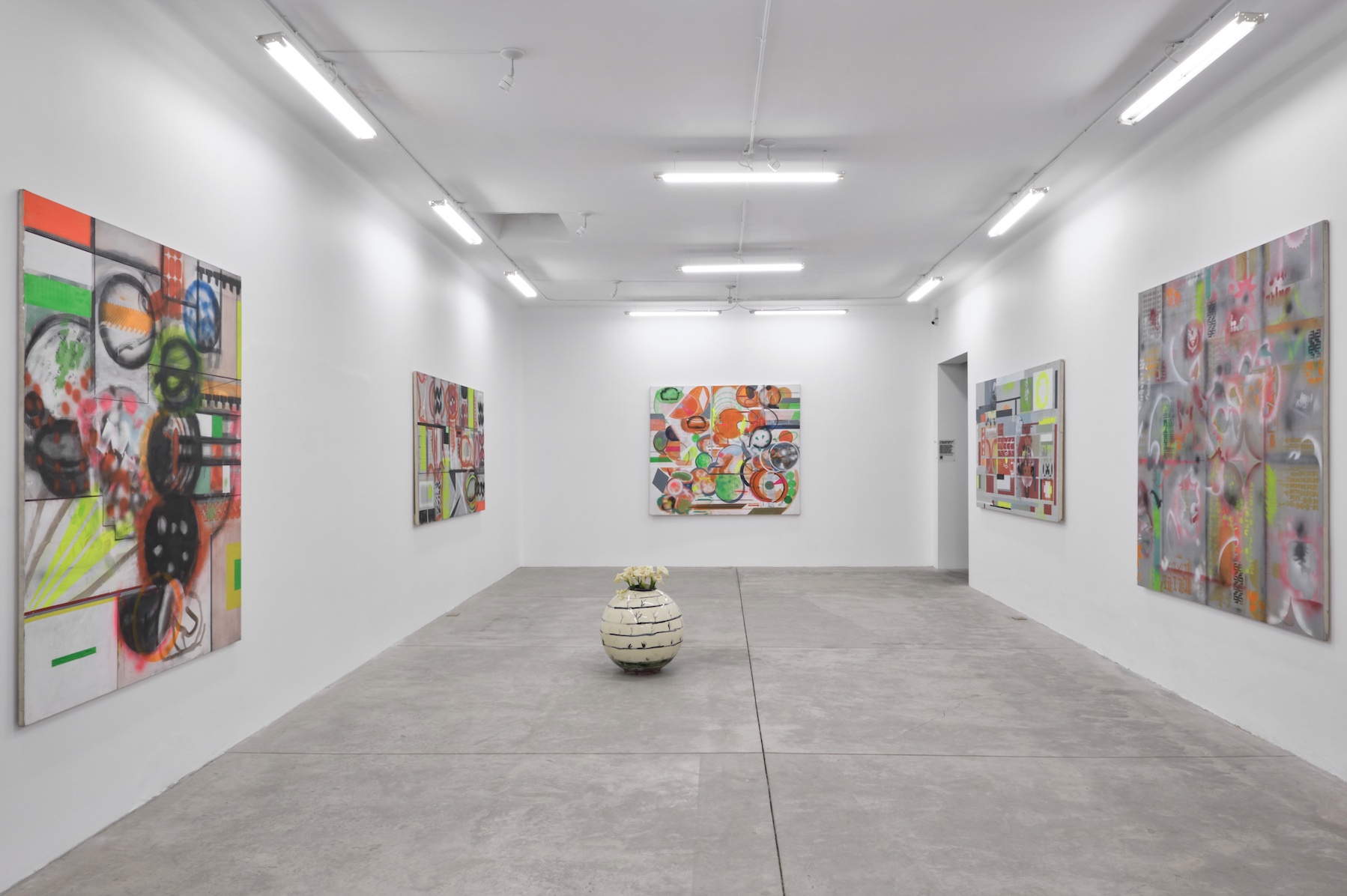
Roberto Turnbull
Machinist
Exhibition
-> Feb 2 2024 – Apr 21 2024
Tiro al Blanco presents Roberto Turbull's exhibition Machinist, curated by Sandra Sánchez.
In the spaces deployed by Roberto Turnbull, the objects do not exist without the relationships they produce, as though they wove complicities among them that we encounter less as signs to interpret than as experiences to pierce. Although we can easily point out circles, squares, lines, colors, animals, rocks, and furniture, we perceive a strangeness—the ecosystem has undergone a variation. Reality both is this and is not this at the same time. A tactic associated with scien- ce fiction, but also with critique and ontology: distrusting predicates, aesthetics, and their hierarchies, as well as fixed identities, in order to wonder (as would a child) about the status of life’s reality.
What is this, and why is it like this? Turnbull evades the position of the priest, of the wise man who would have an answer and establish an order; instead he aims to offer us a scene. Places made of palimpsests, accumulations, erasures, and binding agents. His work resonates with Deleuze and Guattari’s description of space in Kafka: the whole description of the burrow functions to trick the enemy. We will enter, then, by any point whatsoever; none matters more than another, and no entrance is more privileged even if it seems an impasse, a tight passage, a siphon*.
A painting like a burrow where the surface is anything but an argument ready to be read aloud. Turnbull has avoided tur- ning painting into a pamphlet of discursive legitimation accommodated to present fashion. His proposal is a position sta- tement: the artist as machinist who assembles in order to make tangible the idea that life can always be another way, that our way of looking is an illusion to which we should not have too much attachment. Therefore, like Kafka, he avoids the bureaucratic distribution of an entrance and exit, making holes here and there. Traps for deceiving the very contem- porary subjectivization that—as denounced by Foucault—seeks to equate the visible with the enunciable.
Visiting Turnbull’s studio made me so happy, like when you walk without a predetermined destination, twilight falls, and there’s laughter because what matters is the walking itself. I remember a sculpture of a duckling, a precious one, to which Turnbull superimposed a red acrylic and then removed it because it was out of place—that sensation. We toured the spa- ce, which became another and then another; we saw photos and ceramics that operate in the same way as his painting work: by hole, burrow, cut, flow, erasure, and accumulation. Turnbull’s painting has an indisputable place in art history, housed in such important collections as the Museum of Modern Art in New York; nevertheless, it is a true pleasure to see that his work as a sculptor and photographer shares the very same matrix of production. Therefore, we are pleased to be able to give space to these mediums in this exhibition.
A machinist is the one who creates the machine, but also the one who operates it: Where does the artist seek to take us? Perhaps, as in Kafka, to raise our heads before an intense musical sound, a vibration that does not become music, abo- lished before its intonation. Another illusion.
— Sandra Sánchez, curator
*Gilles Deleuze and Félix Guattari, Kafka: Toward a Minor Literature, trans. Dana Polan (Minneapolis: University of Minnesota Press, 1986).